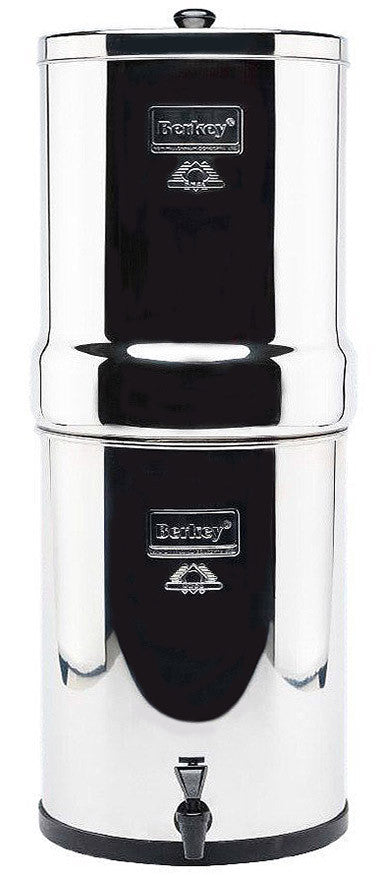
Millions of Americans might drink contaminated water containing toxic chemicals linked to several health issues. These include congenital disabilities, behavioral problems, high cholesterol levels, cancer, and infertility.
Northeastern University and the Environmental Working Group (EWG) researchers found that 610 sources in 43 states contain chemicals in the water. The study shows that the water contains unsafe artificial PFAS chemicals.
In this article, we will discuss the EWG and Northeastern University reports. We will also discuss PFAS chemicals, what they do to the body, and how to eliminate them from the water.
Moreover, we will introduce the current stance of government authorities on the issue. Finally, we will discuss the steps you can take to combat water contamination at home.
The Report of the Environmental Working Group (EWG) and the Northeastern University
The Social Science Environmental Health Research Institute of Northeastern University and the Environmental Working Group (EWG) released a map documenting PFAS.
The map includes popular sites across America, including military bases, public water systems, civilian and military airports, dumps, industrial plants, and firefighter training sites.
In July 2018, there were only 172 contaminated sites in 40 states across America.
In 2019, 610 drinking water resources in 43 states contained unsafe levels of PFAS. It is estimated that around 19 million people are exposed to such artificial chemicals, which have been linked to infertility, thyroid disease, and the weakening of the immune system.
According to EWG, the available data is just the tip of the iceberg.
The EWG has included those below the Environmental Protection Agency’s 70 parts per trillion standard in the interactive map.
On the map, Michigan has 192 sites, reflecting the most comprehensive program in America. California is next at 47, followed by New Jersey at 43. The map also shows 117 military sites.
According to Phil Brown, the director of the Science Environmental Health Research Institute, state and community leaders are working to raise awareness of PFAS chemicals and to push for cleanup to address the issue.
However, the institute demands action since this is a national crisis. He prays that the EPA immediately evaluate all PFAS chemicals and restrict their use. The institute also demands that the polluting industries be held responsible for the problem.
PFAS Chemicals
Millions of people worldwide use PFAS chemicals in consumer products. Per- and polyfluoroalkyl substances (PFAS) are synthetic chemicals that include GenX, PFOS, PFOA, and others.
These chemicals have been persistent in the human body and the environment. Continuous exposure is linked to several health issues. They don’t break down, and they can accumulate over time.
PFAS was previously known as PFOA. DuPont and 3M's Scotchgard used them to make Teflon.
However, the government authorities have phased them out.
Meanwhile, the manufacturers have replaced them with a similar, untested compound that may not be safer than the original.

PFAS can be found in the following:
-
Food packaging includes PFAS-containing materials and equipment processed with PFAS or grown in soil or water contaminated by PFAS.
-
Commercial household products include nonstick products, stain—and water-repellant fabrics, paints, waxes, and fire-fighting foams. This is why significant contamination has been found at military bases and airports where firefighting takes place.
-
A workplace that includes the production industries or facilities. Examples are oil recovery, chrome planting, and electronics manufacturing, which use PFAs.
-
Localized drinking water is associated with a specific facility. Examples are landfills, wastewater treatment plants, manufacturers, and firefighter training centers.
-
In living organisms like animals and humans, PFAS can persist and build up over time.
As part of the PFOA Stewardship Program, PFAS chemicals are no longer manufactured in America. The eight major chemical manufacturers in the United States have agreed to eliminate PFOA and other related chemicals in their products. Also, they did abide by eliminating their emissions from their facilities.
However, although PFOS and PFOA are no longer manufactured in America, they can still be produced internationally. These products can be imported into the United States under the following categories: apparel, carpets, leather, textiles, rubber, plastics, and coatings.
Effects of PFAS
Indeed, PFAS are found in various consumer products we use daily, such as pizza boxes, stain repellents, and cookware. As such, we are exposed to them daily.
PFAS can accumulate and stay in the body over time. Studies have shown that exposure to PFAS can cause adverse health effects in humans.
Studies conclude that these chemicals can cause developmental and reproductive problems. It can cause kidney, liver, and immunological effects when tested with animals in a laboratory setting.
These chemicals lead to tumors in the animals. The findings also include increased cholesterol levels. Other findings are the following:
- Effects on the immune system
- Low infant birth weight
- Hormone or thyroid disruption
- Cancer
Efforts of the Government Authorities
According to Ken Cook, the president of the EWG, the Environmental Protection Agency (EPA) has failed to address PFAS. The country's current crisis has left states and local communities grappling with a problem rooted in the chemical regulatory system.
As such, the EPA must immediately establish legal limits for all PFAS chemicals, and utilities must clean up their contaminated water supplies.
The Federal Safe Drinking Water Act does not legally set limits on PFAS. Moreover, the EPA's 70 parts per billion health advisory is far too high.
The EWG endorses Dr. Phillipe Grandjean's standard from Harvard, which is 1 part per trillion. According to him, even this level can have adverse health effects on children, such as depressed immune system function.

Meanwhile, the EPA states that it has not thoroughly reviewed the EWG data and cannot recommend using the map to assess PFAS risk.
According to John Konkus, the EPA's deputy associate administrator for public affairs, the agency's efforts continue to focus on its PFAS Action Plan.
In March 2019, two PFA monitoring bills were forwarded to Congress. The House version of the bill aims to enhance and inform exposure assessments. Also, this aims to determine environmental impacts plus remediation priorities.
On the other hand, the Centers for Disease Control and Prevention and the Agency for Toxic Substances and Disease Registry have asked the researchers to conduct a multi-site study on the effects of PFAS exposure on humans.
Avoid PFAS Exposure Now
The EPA states that it will conduct additional studies to verify the data presented by EWG. But, to protect your home from the consequences of PFAS, you can try these easy steps now:
Skip the Microwave Popcorn and Fast Food
PFAS chemicals contain oil—and water-repellant properties. The fast-food industry considers them valuable ingredients in their packaged foods.
In 2017, research found that half of the 400 food containers or wrappers contained fluoride, an indicator of PFAS.
PFAS found in the container can leach into the food. Once it enters the body, it can stay there for many years. Indeed, there are enough reasons to avoid fast food, and this is another one.
If you wish to eat it, remove the food from the container or wrapper as quickly as possible to help alleviate the problem.
Be Careful with the Use of Water-Resistant and Stain Products
Another use of the PFAS is for making clothes, upholstery, carpets, and other water-resistant or textile-stain products. The older version of the chemicals has been phased out due to associated environmental and health risks. But the newer ones have taken their place.
To be safe, avoid water-, stain-, or soil-repellants as much as possible. But if you already own products with PFAS, you don’t have to panic. The harm that can happen to a person with PFAS is quite minimal.
Concerns arise when these chemicals are released during manufacture, disposed of, and dumped in landfills. If you can make smarter choices, you can find other alternatives on the market. This will be better for you, your home, and your environment.
Think About Buying or Eating Your Seafood
Since PFAS are prevalent in our ecosystem, they can accumulate in animals’ tissues, and we consume them when we eat those animals. For example, these chemicals can be found in seafood. Buying organic will not even reduce your exposure to PFAS.
A tip is to choose a fish lower on the food chain. If you are concerned about heavy metals like mercury, you might already be doing this tip. For example, instead of buying swordfish, you can buy salmon instead.
Don’t Buy a New Nonstick Pan
If you own pans or pots containing these chemicals, you don’t have to throw them away or stop using them until they are damaged. However, you should also refrain from buying a new set. If you buy a new one, ensure it does not contain PFAS.
Experts recommend buying ceramic, stainless steel, or cast-iron cookware. You can also check for brands that offer PFAS-free products.
Check the Water Supply
PFAS from manufacturing or industrial processes can accumulate in water supplies. This is true for people who live near wastewater treatment plants, industrial sites, and military or fire training centers.
Unfortunately, it may not be easy to determine whether your community's drinking water is contaminated with PFAS.
This is because the EPA does not require the municipalities to notify the people about these chemicals. But if you are concerned, you can ask your water supplier.

When the homeowners discovered high PFAS chemical levels, they invested in water filters. One filter worth investing in is the Berkey Water Filter.
To upgrade your family’s protection, check the Berkey Water Filter for your home now.
Conclusion
In summary, the study conducted by the Environmental Working Group and Northeastern University must be given importance by authorities and every American.
Indeed, PFAS in water can adversely affect people of all ages and genders.
As such, homeowners and authorities must work together to combat the problem. To minimize PFAS exposure at home, you can take simple yet effective steps.
Remember the tips above and share the news with your loved ones now.
← Older Post Newer Post →





